September 23, 2021
Planting Pollinator Diversity
When you hear the word “pollinator,” what comes to mind? And if you want a garden jam-packed with them, what do you plant?
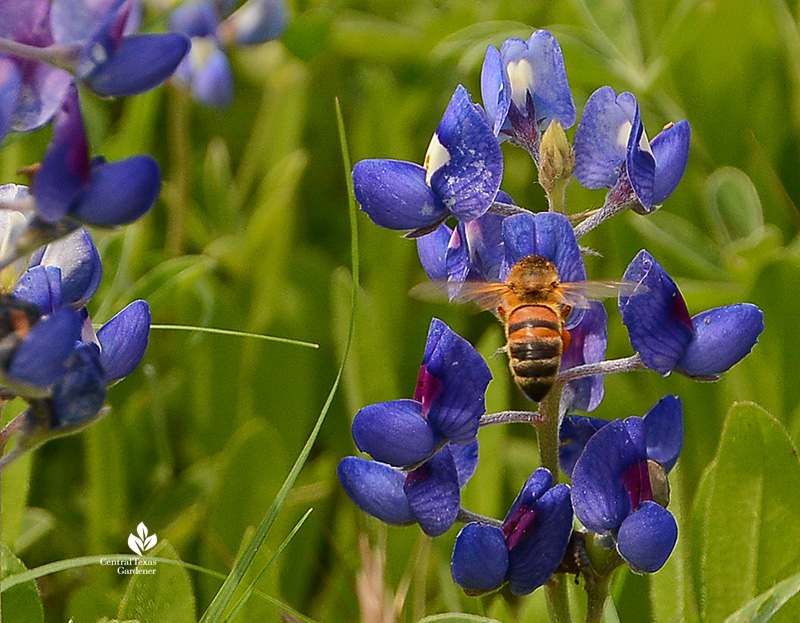
This week, Rachel Raise, landscape architect at Raise Design, and co-founder of Pollinate Austin, joins John Hart Asher to zoom in on plants designed to attract specific wildlife demographics, even in small gardens.
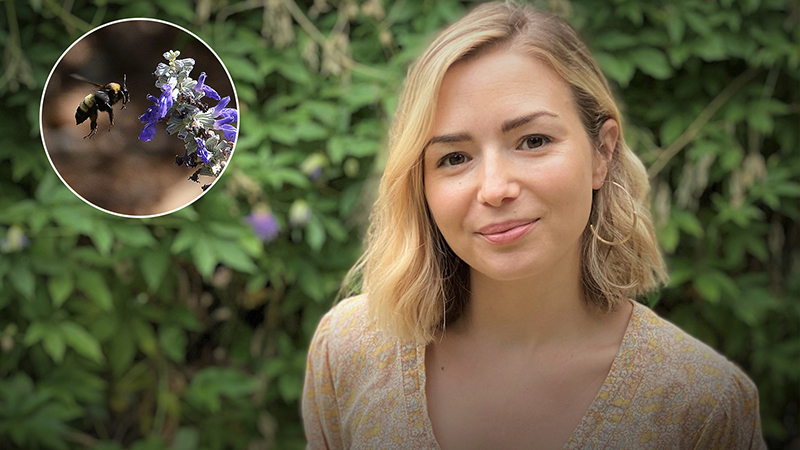
Pollinators include bees, butterflies, flies, wasps, moths, beetles, bats, hummingbirds, and many others. Some are very tiny, like native bees and hoverflies.
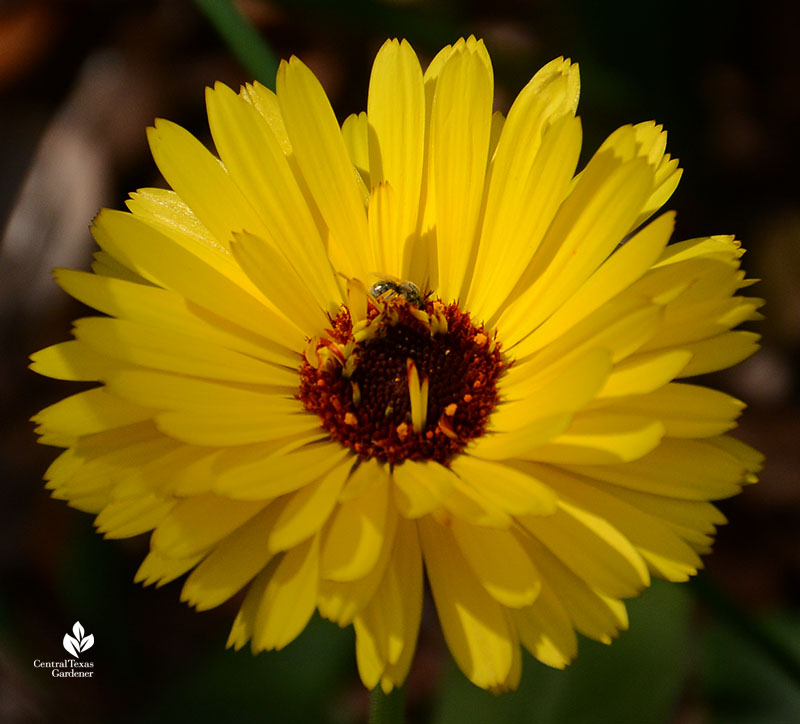
“A pollinator is anything that moves pollen from one thing to another. So what happens usually is bees or butterflies or hummingbirds or bats go are attracted to a flower because of their nectar and/or their pollen. . . A lot of them just go for the nectar (bees also collect pollen for protein) and then accidentally get a lot of pollen on their body. It’s kind of like Cheeto dust!” Rachel said. (Dare I say that Cheetos are one of my downfalls, so I can totally relate to that analogy.) Here’s someone reveling in a passion vine flower. Butterflies are just as passionate, though more dignified, about this summertime favorite.
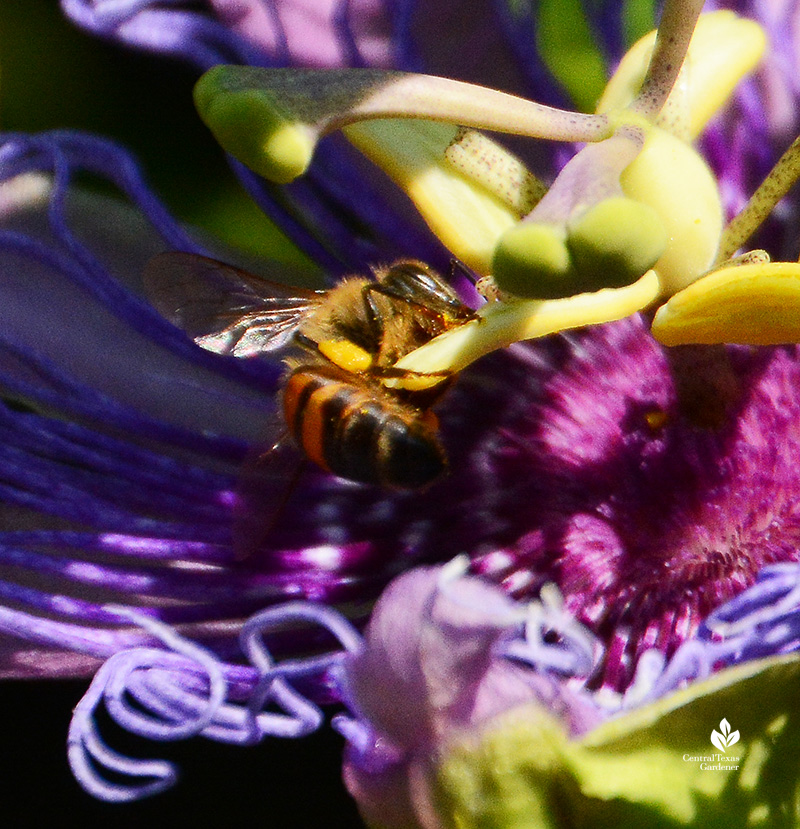
“And they carry it from one from one plant to the next. And in doing so, that tiny little gesture of dropping that pollen from the plant to the next one allows for the proliferation of the plant.” Summertime’s annual sunflowers bring in the bees, like this carder bee, to also pollinate squash, tomatoes and other crops.
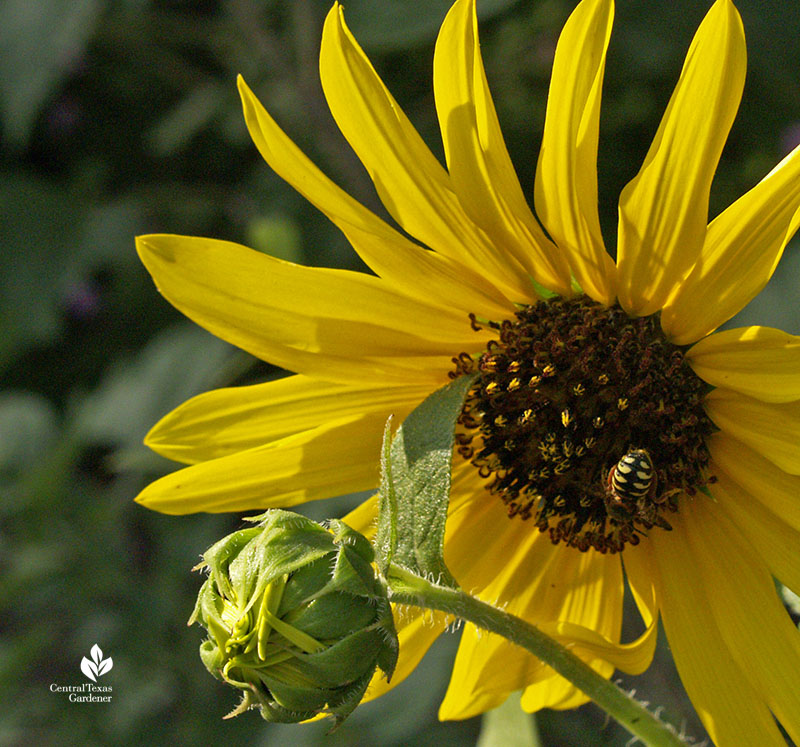
In addition to Pollinate Austin, Rachel’s involved with Grow Green, Austin’s education program about sustainable gardening. She’s a member of the Native Plant Society and serves on Zilker Botanical Garden’s board. She brings sustainable wisdom and pollinator appeal to her designs that beautify gardens small and large.
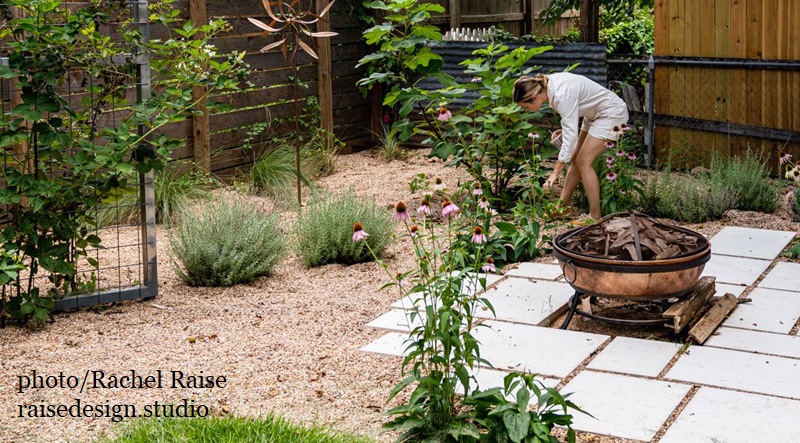
Plants evolved flower shape and color strategies to invite specific creatures to propagate them. Some plants, like native mealy blue sage (Salvia farinacea), feed hummingbirds, bees, butterflies and more.
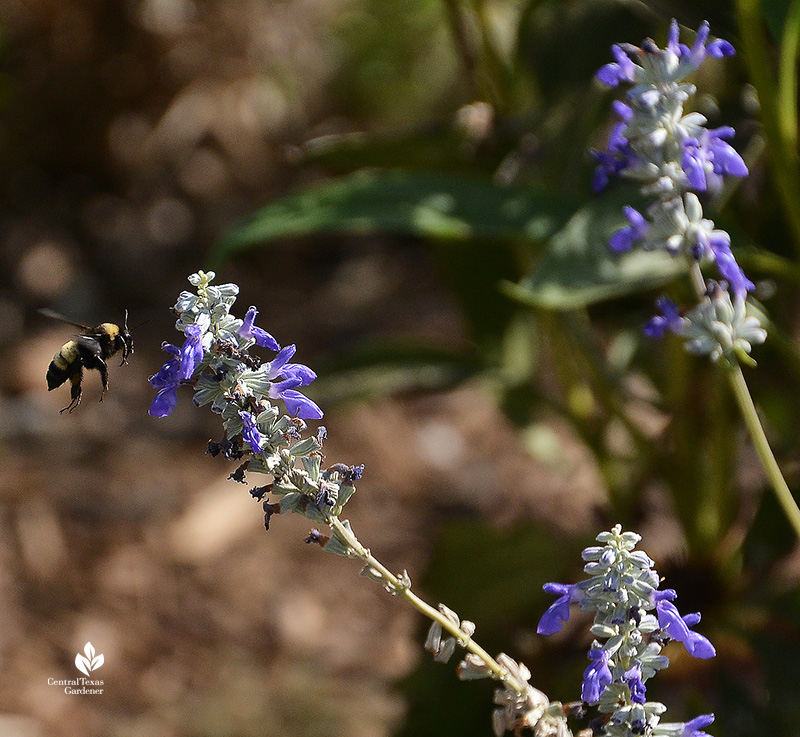
Sturdy composite flowers like springtime coneflowers, summer sunflowers, and fall asters support bees, butterflies and many landing-pad insects.
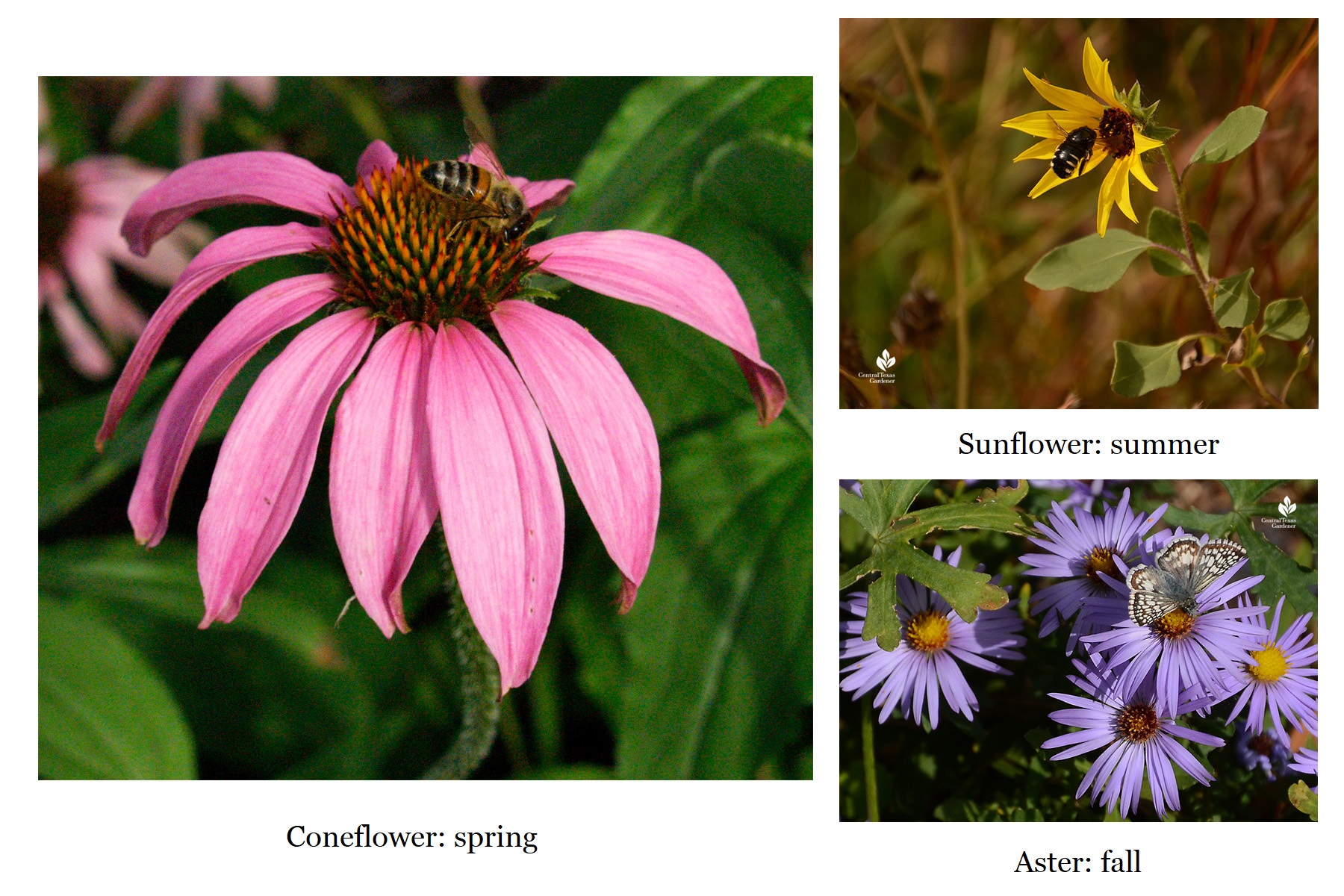
Tubular flowers entice long hummingbird beaks or butterfly tongues (probiscis). Summer’s trumpet vine and spring blooming crossvine suit larger butterflies.
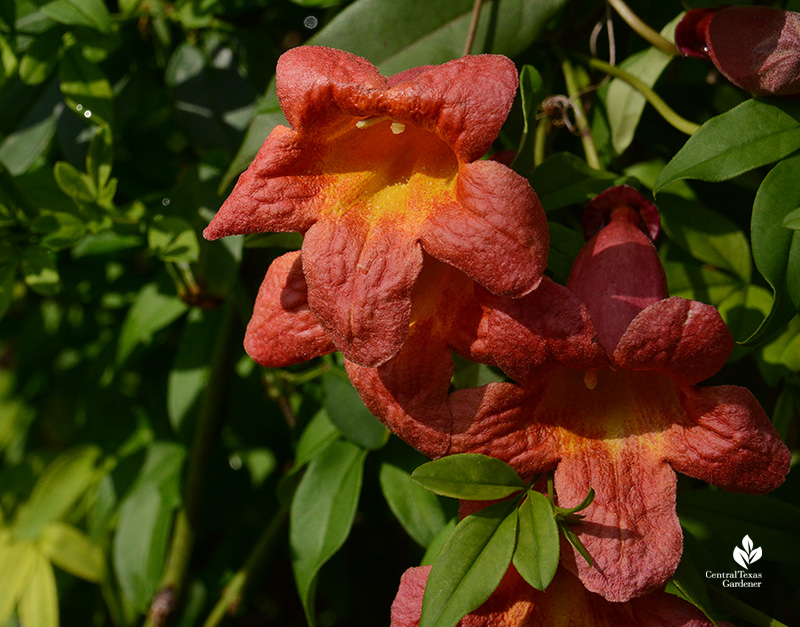
Native Firebush (Hamelia patens) sports summertime flame orange tubes short enough that I’ve seen many bees on them, along with hummingbirds and butterflies. I’ve seen wasps and teensy flying insects go straight for the gold (nectar)!
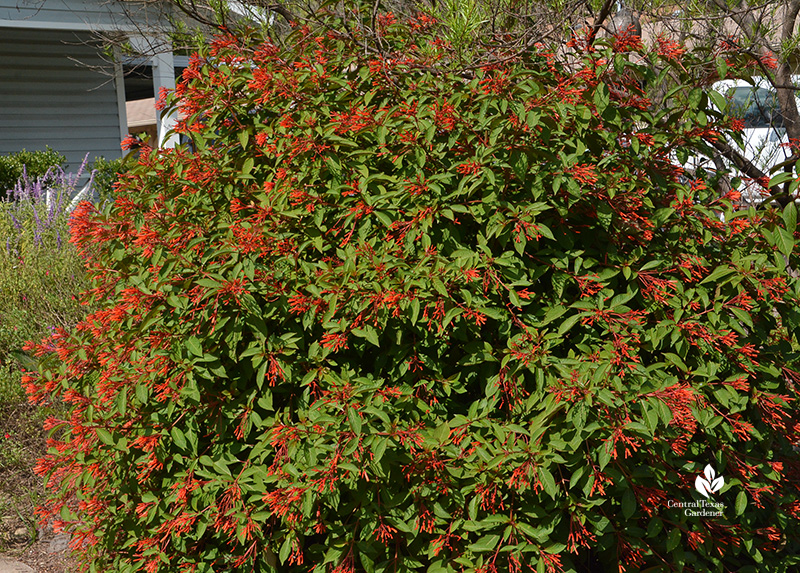
This big beauty is a carpenter bee, a solitary bee that doesn’t live in colonies.
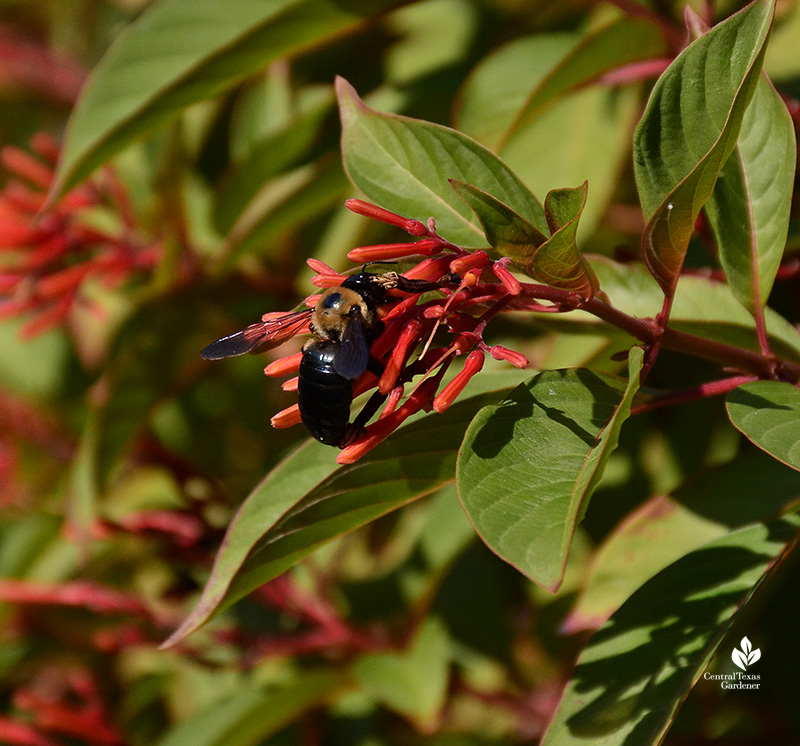
Smaller tubular flowers, like salvias and spring-blooming Brazos penstemons, attract butterflies as well as bees that snuggle inside.
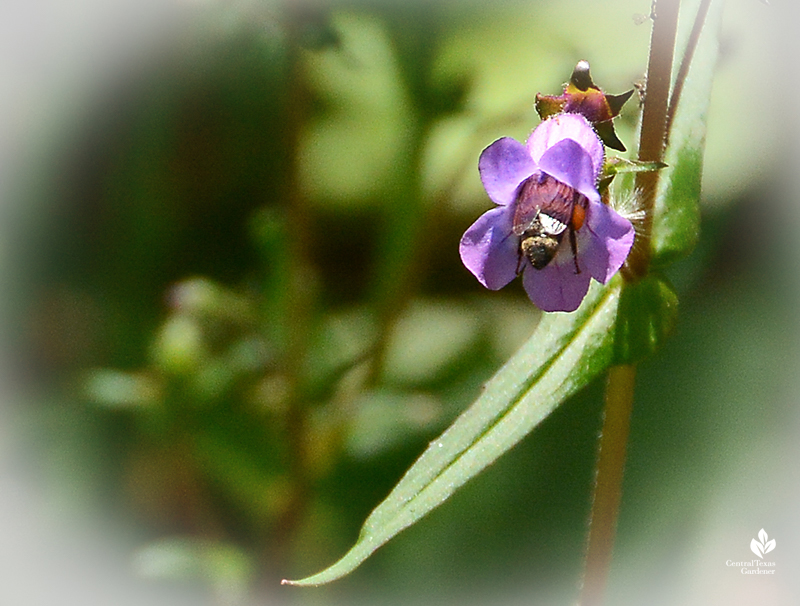
Brazos penstemons and Salvia lyrata self-populated gaps in my rustic back-of-yard patio, a bee whirlwind in spring.
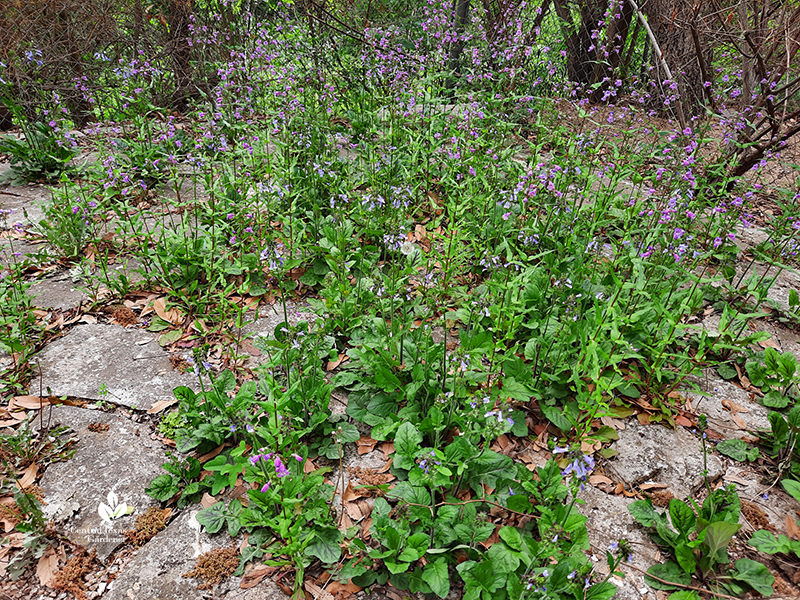
Cupped flowers invite nestling (like bees ecstatically rolling around in poppies). Beetles favor them, too, including on native white prickly poppy and these Kern’s flower scarabs on viewer Jo Diser’s prickly pear this summer.
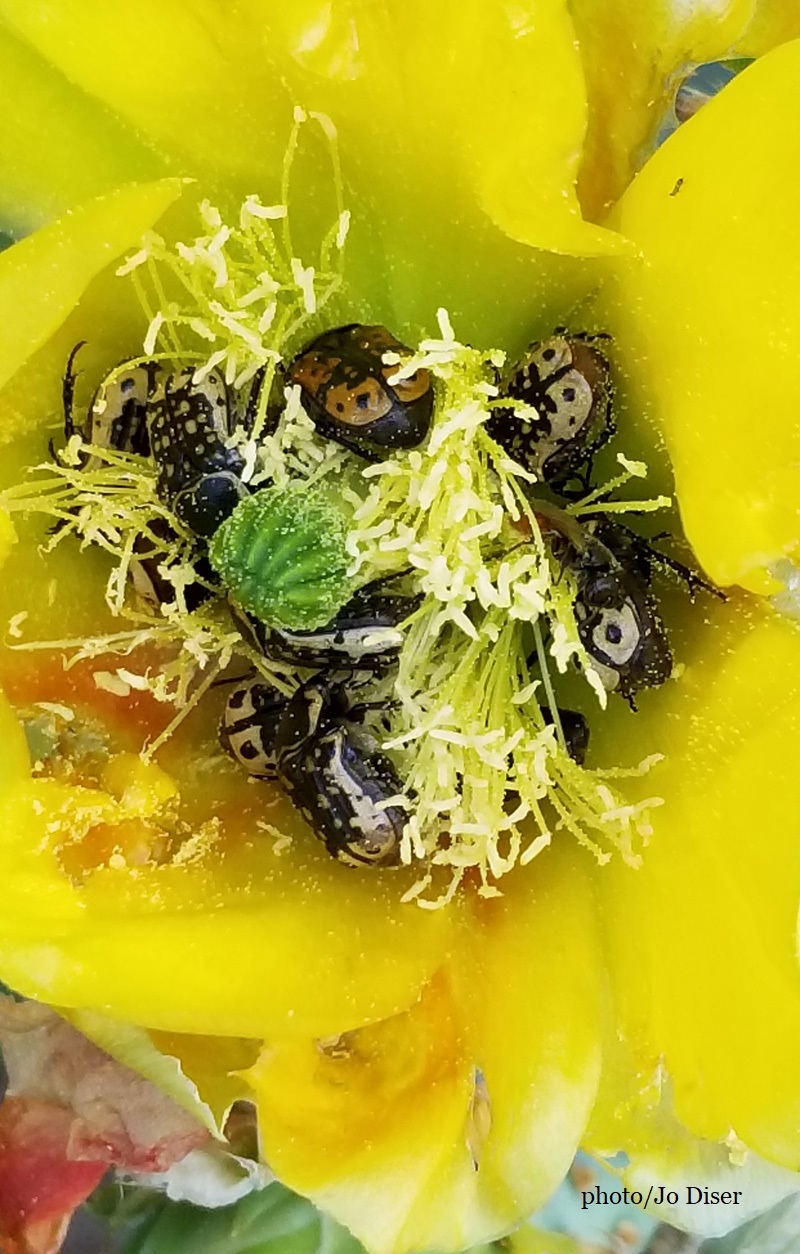
Native baby blue eyes, a springtime annual for part shade under trees (nicely companions with columbine), snuggles all kinds of bees, including this striking metallic sweat bee hugging mine last spring!
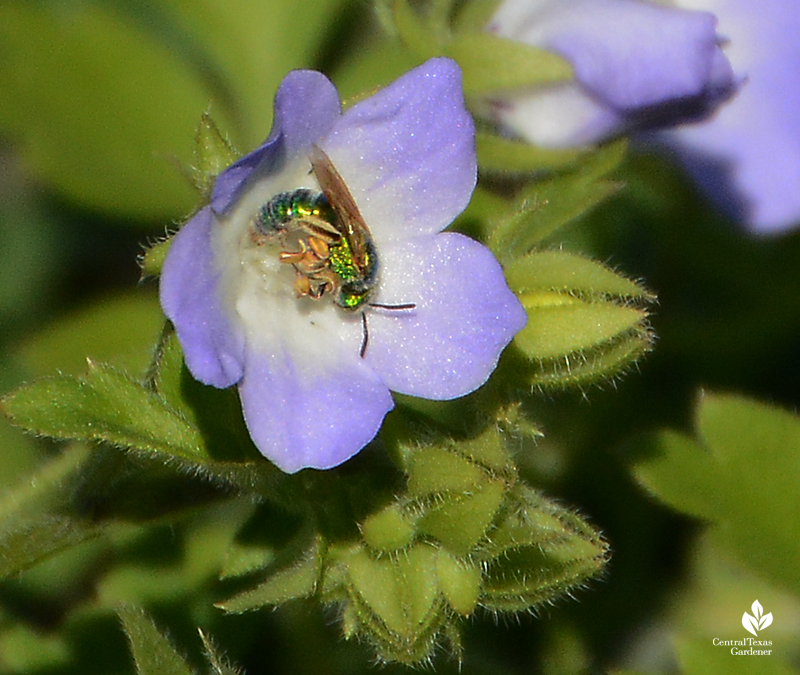
Beekeepers value fruit trees of all kinds, since they concentrate lots of food in one place. Bees don’t wear themselves out hunting for nectar.
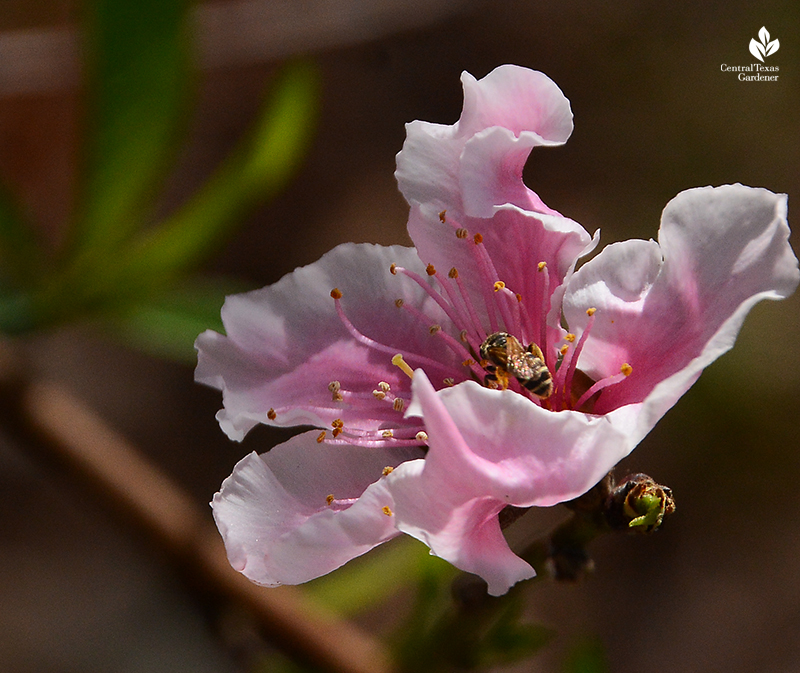
Rachel clusters plants in her designs, not only for our visual satisfaction, but also to make the bee commute shorter.
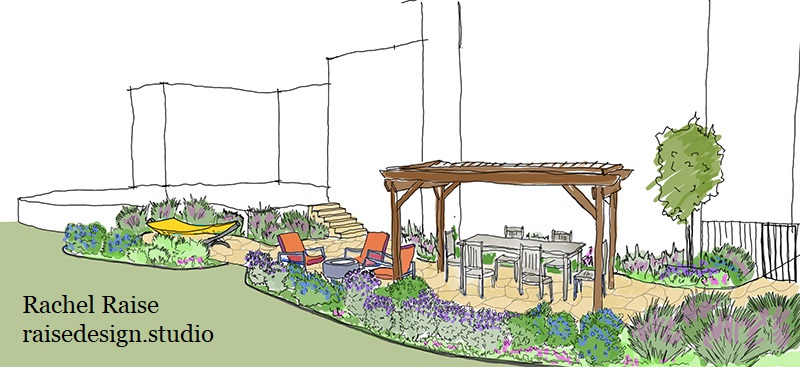
A great strategy for all wildlife is to layer plants from the ground up. In this small space, Rachel paired groundcover native silver ponyfoot, coneflower, Russian sage, and young Gulf muhly grasses.
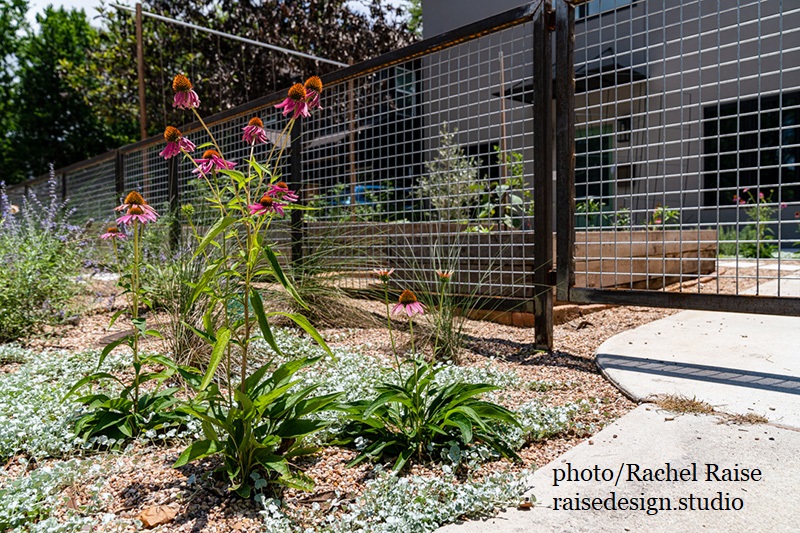
Herbs and edibles like rosemary, African blue basil, artichokes—and our tomatoes, squash, and peppers—double duty as food for one and all! In this narrow strip, gardeners paired edible society garlic and Santa Rita prickly pear.
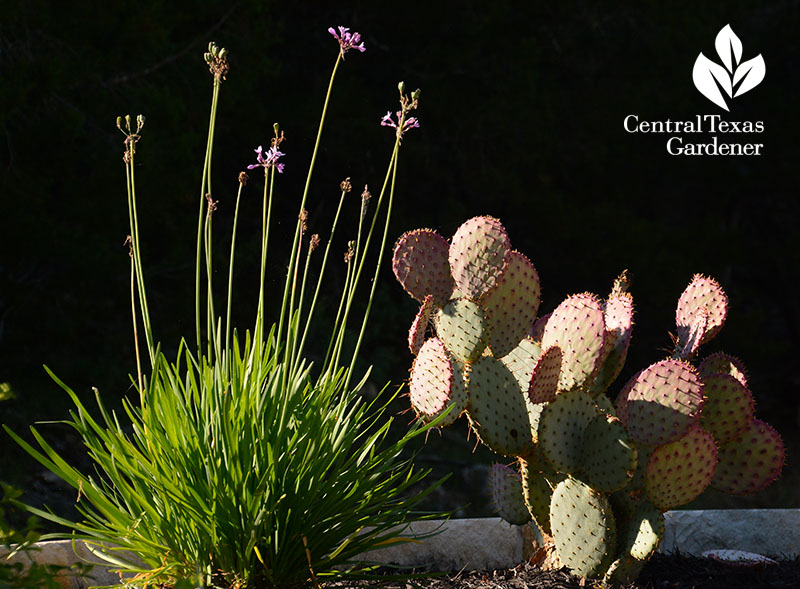
Let winter’s crops bolt and flower in spring. Broccoli, parsley, and this cilantro’s flowers signal that they’re ready to make seeds. In the meantime, bees grab a meal.
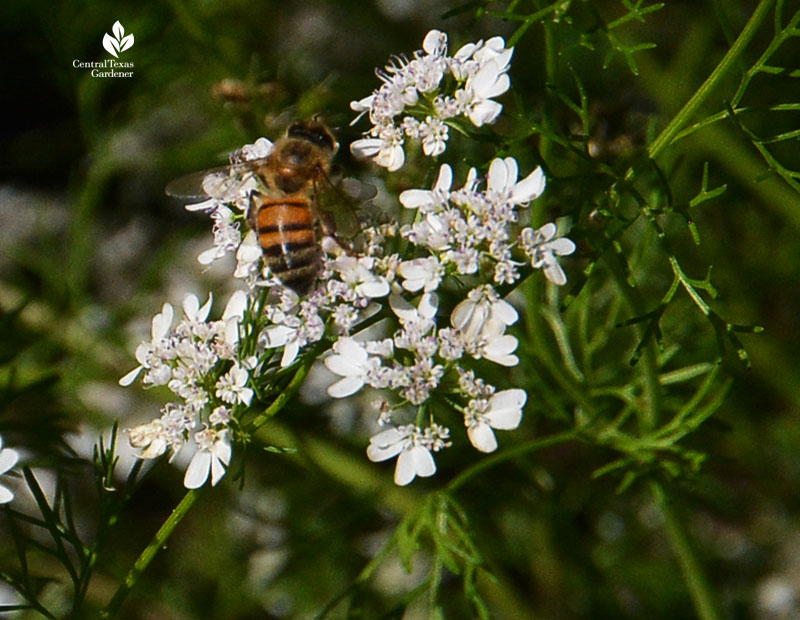
Of course, there are hundreds of trees, shrubs, perennials, and annuals that work with our pollinators. Even in a small yard or containers, we can help Austin become a certified Bee City. That was Rachel’s mission behind Pollinate Austin, when she brought together a diverse community group to protect and encourage bees, along with other pollinators, including bats. Follow them on Facebook to learn more!
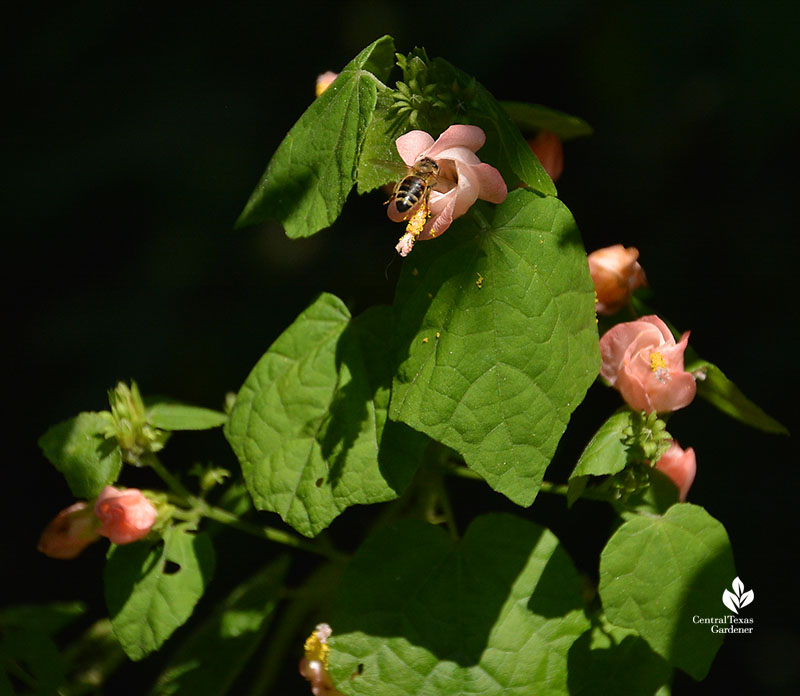
And check out Rachel’s website and follow on Instagram for updates!
Watch now to get the full story and more plant ideas!
Thanks for stopping by! Linda
tags:

